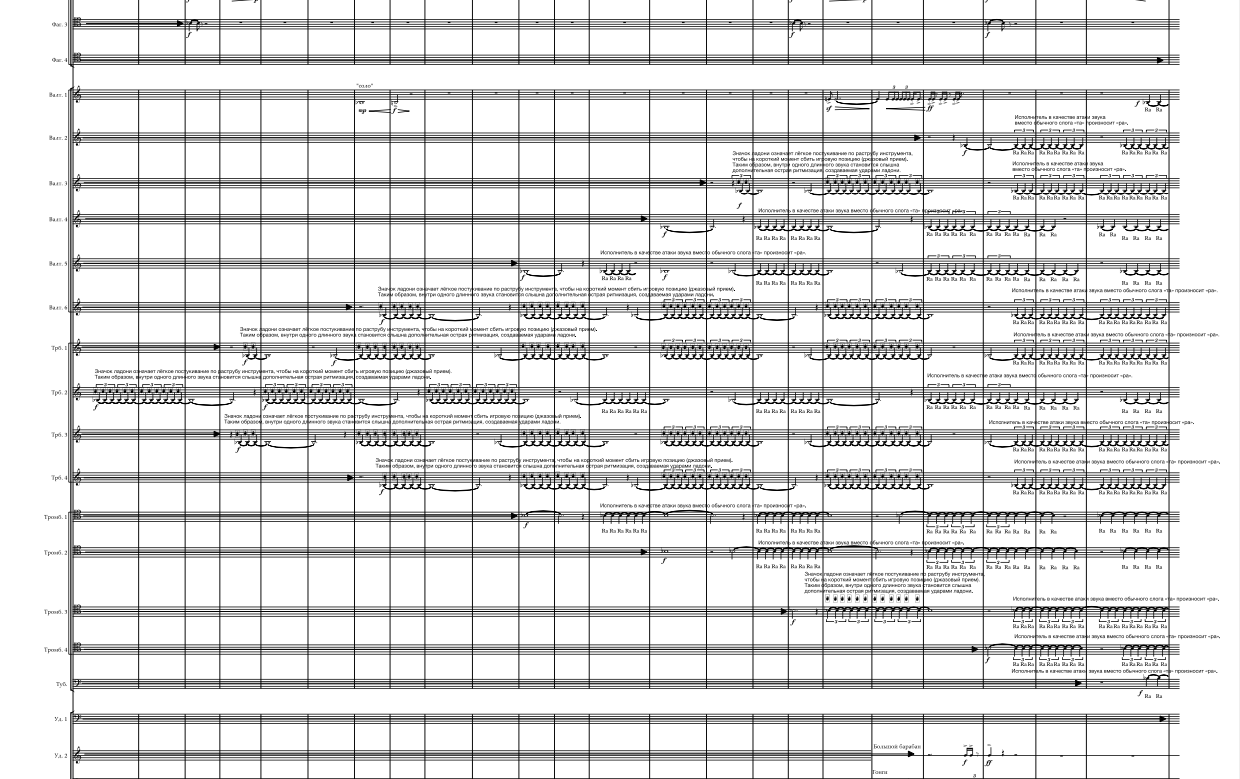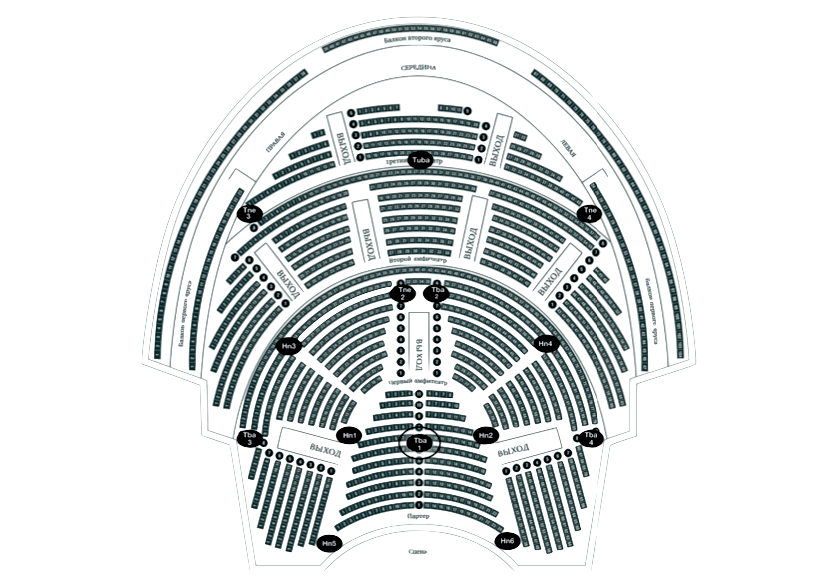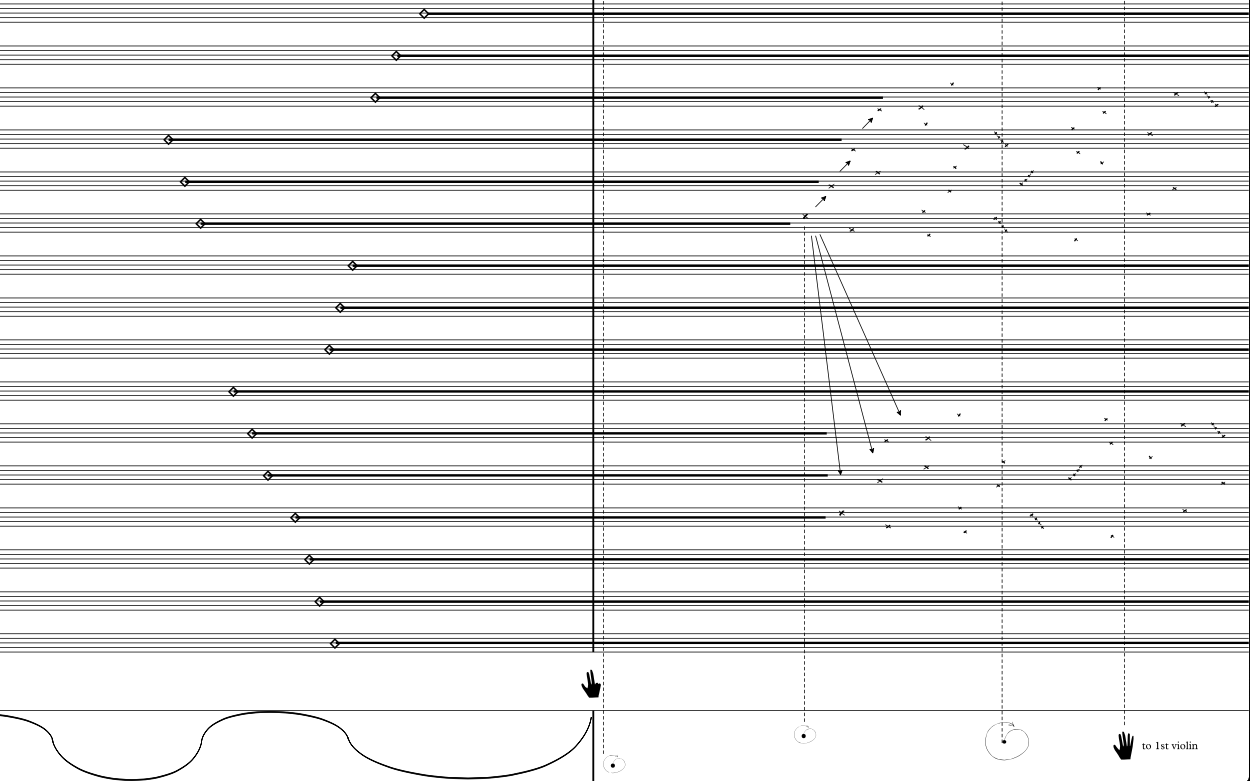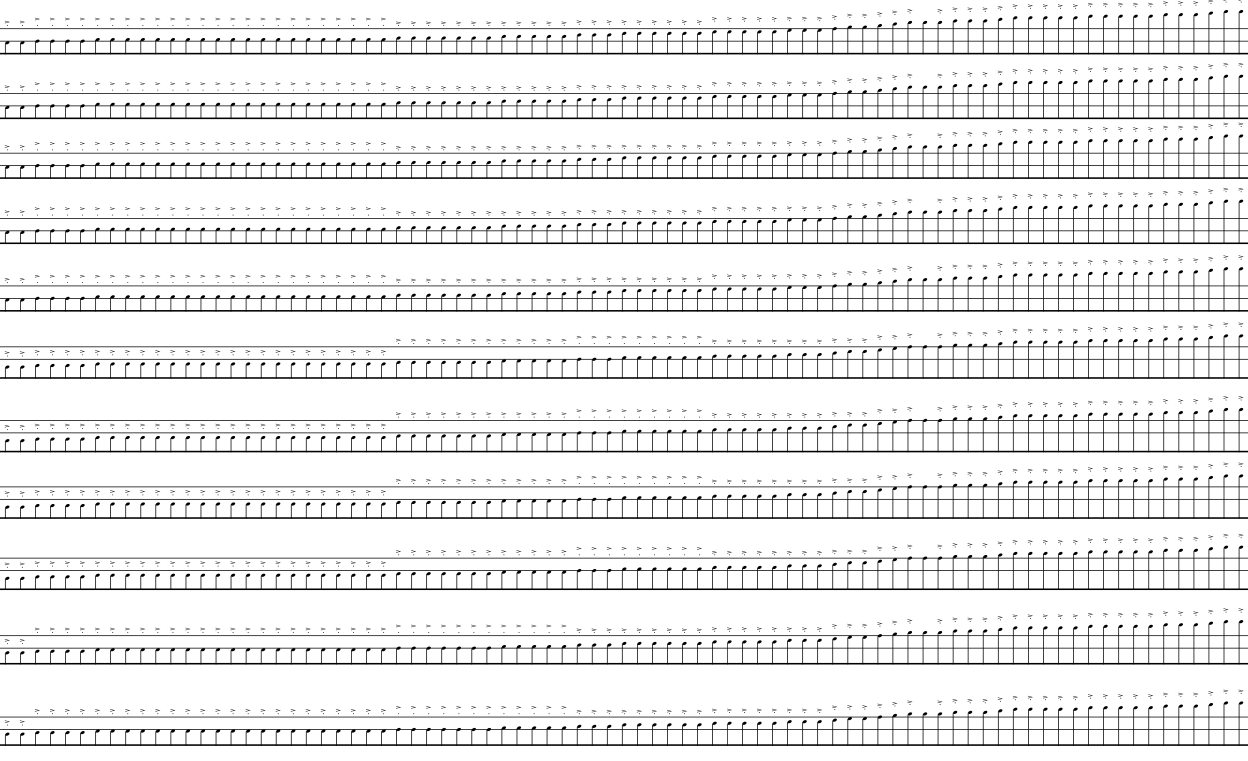‘Terracotta’ is the score for the large orchestra (quadruple size). Many unusual percussion instruments are there besides two voices. I characterize it the spatial because it manifests here in two ways.
The orchestra has a spatial sound nature always. I imagined it as a gigantic mass of people, a hundred, that saturates energy in one place. A sound and playing energy during their playing can pass through musicians’ groups, then pass further, and so on. The spatial aspect is always present in any orchestra music, because of the instruments’ wide location.
The ritual comprehension of the space is a second spatial characteristic. I try to create a new context for different concert hall zones. What the orchestra is in principle, and how to view it outside the usual understanding? It can work by musicians’ locations changing. Which creates a new hall perception during one performance.
Improvisation is also important in the score, it creates some free energy. I asked myself: ‘What is an orchestra improvisation, without control by the conductor? Is it even possible?’. Ten the same time, improvising people is already a lot. It’s hard to get a musical result out of this. What happens if this number increases several times, what criteria we can create from this? Thinking about that, I put many improvisation and game situations to this score.

The orchestra seems to me as an extensive tension field. The sounding field. This idea follows me. We can observe from far away how very concentrated forces action. Like watching a thunderstorm: an ever-changing ‘theatre of natural action’ is unfolding in a vast space. The visual, performative component is essential in ‘Terracotta’. The piece is full of lively, sometimes ‘explosive’ energy. I often thought that youth orchestras should perform such compositions, in which musicians, it seems to me, can more easily imbue with unusual ideas. There is a part that I call ‘Hundertwasser’ — after the Austrian architect and artist, I have an intuitive connection with his work. So, I involve him as a symbolic “object of presence”. I wrote nothing about it in the score — these are my inner things.



